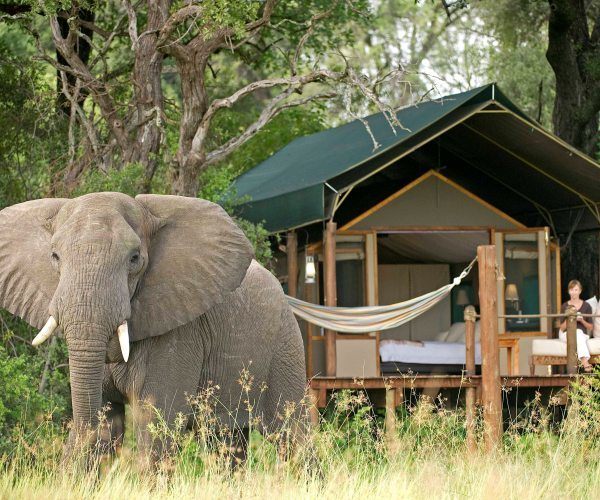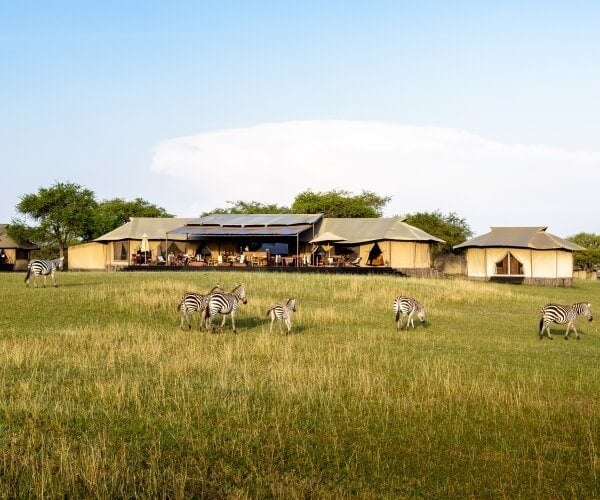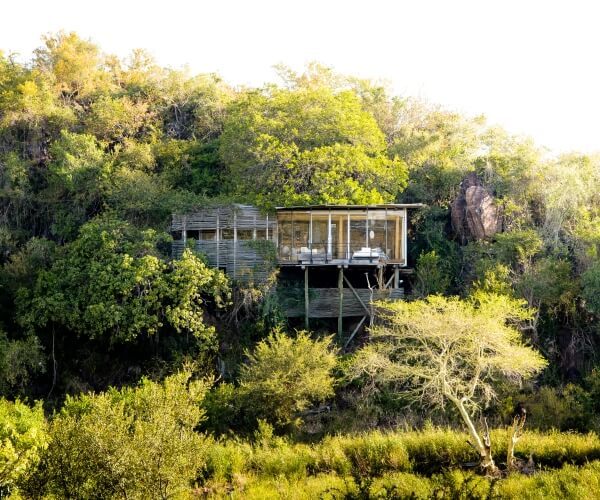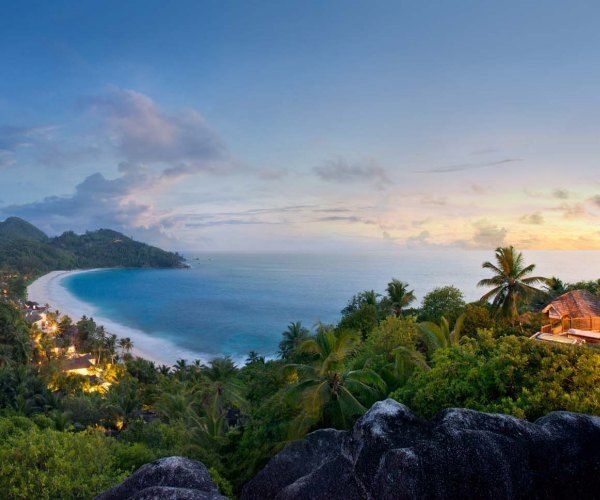Adventure Travel · Africa · Botswana · Regions · Seychelles · South Africa · Speciality Travel · Tanzania
When to go on safari
When you are feeling blue in the winter months, and desperate for a glimpse of sunshine, it should be no surprise that your mind turns to warmer climes. Likewise, as the summer holidays approach, and the kids are finishing school, you need a way to entertain them, and to spend quality time together as a family. An exciting luxury safari in Africa might well fit the bill, but when is the right time to go?
The quick answer is that there’s never a bad time to go on safari! Every single month of the year has its benefits, from weather conditions to large-scale migrations, festivals to quiet times in the national parks and lodges. Safari design specialists use their insight into all these factors to ensure they match your interests and dates of travel with the very best safari experiences. Here are a few of our recommendations for where and when to go on safari.
January to March
The wet season in Botswana is at the start of the year, and the parks are beautifully green and lush. Though you might not normally think of travelling during the rains, the temperatures are cooler, the lodges and camps far quieter, and all the grazing animals are giving birth. Watching a newborn zebra or antelope calf taking its first few faltering steps will be a highlight of any trip, and the bird watching is outstanding at this time of year too. There is family friendly accommodation at Stanley’s Camp, where you can meet the orphaned elephants, and the exclusive Zarafa Camp overlooks forests, flood plains, and the savannah, all of which are rich in wildlife.
 April to June
Head to Tanzania in between April and June to witness one of the most magnificent spectacles on earth: the wildlife migrations in the Serengeti. 2 million wildebeest, zebra, and gazelle are on the move, searching for fresh grasses, with their newly born calves in tow. Tanzania has some of the finest safari camps in Africa, and many of them are semi-mobile, moving with the migrations for optimal wildlife viewing. Singita Sabora in the Grumeti National Park is one of our favourite spots, an intimate explorer’s camp, inspired by the adventurers of the 1920s, and with a definite sense of style.
April to June
Head to Tanzania in between April and June to witness one of the most magnificent spectacles on earth: the wildlife migrations in the Serengeti. 2 million wildebeest, zebra, and gazelle are on the move, searching for fresh grasses, with their newly born calves in tow. Tanzania has some of the finest safari camps in Africa, and many of them are semi-mobile, moving with the migrations for optimal wildlife viewing. Singita Sabora in the Grumeti National Park is one of our favourite spots, an intimate explorer’s camp, inspired by the adventurers of the 1920s, and with a definite sense of style.
 July to September
It’s the southern hemisphere, so July to September is the winter in South Africa. It is the ideal time to visit the Kruger National Park because during the dry season the undergrowth dies back, and all the animals congregate around the watering holes. The park boasts more than 10,000 elephant, and 20,000 buffalo, antelope, zebra, giraffe, lion, and cheetah, and is a conservation success story. Richard Branson’s Ulusuba gives you the chance to stay in an opulent penthouse close to the Kruger, and Singita has two extraordinary safari lodges, Singita Lebombo and Sweni Lodges, in the vicinity too. Safaris don’t come more luxurious.
July to September
It’s the southern hemisphere, so July to September is the winter in South Africa. It is the ideal time to visit the Kruger National Park because during the dry season the undergrowth dies back, and all the animals congregate around the watering holes. The park boasts more than 10,000 elephant, and 20,000 buffalo, antelope, zebra, giraffe, lion, and cheetah, and is a conservation success story. Richard Branson’s Ulusuba gives you the chance to stay in an opulent penthouse close to the Kruger, and Singita has two extraordinary safari lodges, Singita Lebombo and Sweni Lodges, in the vicinity too. Safaris don’t come more luxurious.
 October to December
You may not have thought of the Seychelles as a safari destination, but the island offers some exceptional wildlife spotting opportunities both below the waves and in its pristine rainforests. The Valleé de Mai Nature Reserve is a UNESCO World Heritage Site with unique birdlife, including the endemic Seychelles black parrot and the Seychelles blue pigeon. You can also see tiger chameleons, skinks, geckos, and tree frogs. The giant tortoises on La Digue grow up to 4’ long, and you can enjoy superb diving and snorkelling on the coral reefs too. On an underwater safari you’ll see angelfish, butterflyfish, octopus, hawksbill turtle, and humphead parrotfish.
October to December
You may not have thought of the Seychelles as a safari destination, but the island offers some exceptional wildlife spotting opportunities both below the waves and in its pristine rainforests. The Valleé de Mai Nature Reserve is a UNESCO World Heritage Site with unique birdlife, including the endemic Seychelles black parrot and the Seychelles blue pigeon. You can also see tiger chameleons, skinks, geckos, and tree frogs. The giant tortoises on La Digue grow up to 4’ long, and you can enjoy superb diving and snorkelling on the coral reefs too. On an underwater safari you’ll see angelfish, butterflyfish, octopus, hawksbill turtle, and humphead parrotfish.
 Laura Burdett-Munns is Managing Director at Africa Exclusive. Africa Exclusive has been creating the finest tailor-made safaris since 1990, specialising in luxurious accommodation in beautiful remote places.
If you would like to be a guest blogger on A Luxury Travel Blog in order to raise your profile, please contact us.
Laura Burdett-Munns is Managing Director at Africa Exclusive. Africa Exclusive has been creating the finest tailor-made safaris since 1990, specialising in luxurious accommodation in beautiful remote places.
If you would like to be a guest blogger on A Luxury Travel Blog in order to raise your profile, please contact us.
 April to June
Head to Tanzania in between April and June to witness one of the most magnificent spectacles on earth: the wildlife migrations in the Serengeti. 2 million wildebeest, zebra, and gazelle are on the move, searching for fresh grasses, with their newly born calves in tow. Tanzania has some of the finest safari camps in Africa, and many of them are semi-mobile, moving with the migrations for optimal wildlife viewing. Singita Sabora in the Grumeti National Park is one of our favourite spots, an intimate explorer’s camp, inspired by the adventurers of the 1920s, and with a definite sense of style.
April to June
Head to Tanzania in between April and June to witness one of the most magnificent spectacles on earth: the wildlife migrations in the Serengeti. 2 million wildebeest, zebra, and gazelle are on the move, searching for fresh grasses, with their newly born calves in tow. Tanzania has some of the finest safari camps in Africa, and many of them are semi-mobile, moving with the migrations for optimal wildlife viewing. Singita Sabora in the Grumeti National Park is one of our favourite spots, an intimate explorer’s camp, inspired by the adventurers of the 1920s, and with a definite sense of style.
 July to September
It’s the southern hemisphere, so July to September is the winter in South Africa. It is the ideal time to visit the Kruger National Park because during the dry season the undergrowth dies back, and all the animals congregate around the watering holes. The park boasts more than 10,000 elephant, and 20,000 buffalo, antelope, zebra, giraffe, lion, and cheetah, and is a conservation success story. Richard Branson’s Ulusuba gives you the chance to stay in an opulent penthouse close to the Kruger, and Singita has two extraordinary safari lodges, Singita Lebombo and Sweni Lodges, in the vicinity too. Safaris don’t come more luxurious.
July to September
It’s the southern hemisphere, so July to September is the winter in South Africa. It is the ideal time to visit the Kruger National Park because during the dry season the undergrowth dies back, and all the animals congregate around the watering holes. The park boasts more than 10,000 elephant, and 20,000 buffalo, antelope, zebra, giraffe, lion, and cheetah, and is a conservation success story. Richard Branson’s Ulusuba gives you the chance to stay in an opulent penthouse close to the Kruger, and Singita has two extraordinary safari lodges, Singita Lebombo and Sweni Lodges, in the vicinity too. Safaris don’t come more luxurious.
 October to December
You may not have thought of the Seychelles as a safari destination, but the island offers some exceptional wildlife spotting opportunities both below the waves and in its pristine rainforests. The Valleé de Mai Nature Reserve is a UNESCO World Heritage Site with unique birdlife, including the endemic Seychelles black parrot and the Seychelles blue pigeon. You can also see tiger chameleons, skinks, geckos, and tree frogs. The giant tortoises on La Digue grow up to 4’ long, and you can enjoy superb diving and snorkelling on the coral reefs too. On an underwater safari you’ll see angelfish, butterflyfish, octopus, hawksbill turtle, and humphead parrotfish.
October to December
You may not have thought of the Seychelles as a safari destination, but the island offers some exceptional wildlife spotting opportunities both below the waves and in its pristine rainforests. The Valleé de Mai Nature Reserve is a UNESCO World Heritage Site with unique birdlife, including the endemic Seychelles black parrot and the Seychelles blue pigeon. You can also see tiger chameleons, skinks, geckos, and tree frogs. The giant tortoises on La Digue grow up to 4’ long, and you can enjoy superb diving and snorkelling on the coral reefs too. On an underwater safari you’ll see angelfish, butterflyfish, octopus, hawksbill turtle, and humphead parrotfish.
 Laura Burdett-Munns is Managing Director at Africa Exclusive. Africa Exclusive has been creating the finest tailor-made safaris since 1990, specialising in luxurious accommodation in beautiful remote places.
If you would like to be a guest blogger on A Luxury Travel Blog in order to raise your profile, please contact us.
Laura Burdett-Munns is Managing Director at Africa Exclusive. Africa Exclusive has been creating the finest tailor-made safaris since 1990, specialising in luxurious accommodation in beautiful remote places.
If you would like to be a guest blogger on A Luxury Travel Blog in order to raise your profile, please contact us.Did you enjoy this article?
Receive similar content direct to your inbox.


Great! I know that Tanzania has some of the finest safari camps in Africa, and many of them are semi-mobile, moving with the migrations for optimal wildlife viewing. Thanks